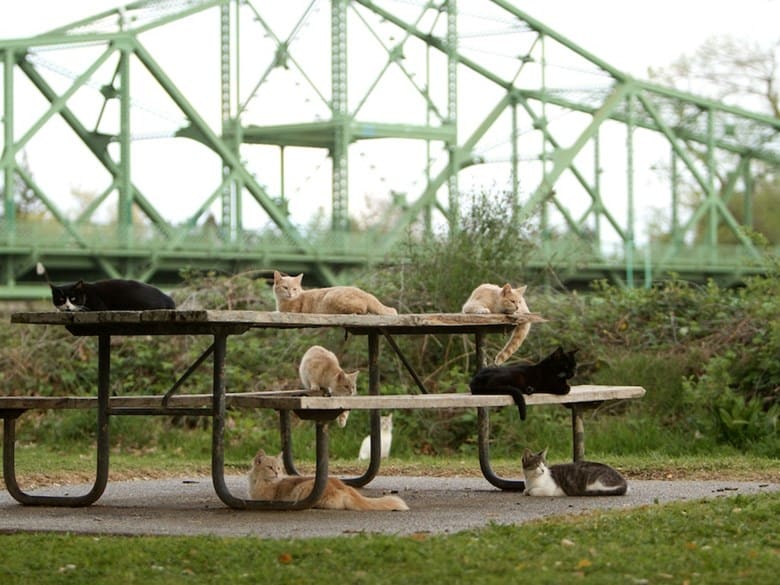Feral Cats
Feral cats have been a controversial topic of discussion with many groups for many years. In our region there are groups who take the time to trap, neuter, and release (TNR) feral cats and to feed feral cat colonies. The Sacramento-Shasta Chapter Conservation Affairs Committee became interested in this issue after hearing the Capital Public Radio Sacramento ‘River Cats’ Troubling To Wildlife, Human Health report in 2014. Prior to that the Committee knew that feral cat colonies existed in our region but we were unaware of just how many feral cats there are. The report estimated that there are as many as 1,000 stray cat colonies and it was estimated that there were 77,000 stray cats in Sacramento. We are interested in learning if the population has shrunk or grown since 2014.

Sacramento feral cats – ©Andrew Nixon / Capital Public Radio
The Wildlife Society has a position statement available on their website. The position statement includes the following language:
“Feral and free-ranging domestic cats are exotic species to North America. Exotic species are recognized as one of the most widespread and serious threats to the integrity of native wildlife populations and natural ecosystems. Exotic species present special challenges for wildlife managers because their negative impacts on native species are poorly understood by the public to the point that many exotic species are perceived as a natural component of the environment. Some exotic species have advocacy groups that promote their continued presence, and few policies and laws deal directly with their control. Perhaps no issue has captured more of the challenges for contemporary wildlife management than the impacts of feral or free-ranging domestic cats and their impacts on native wildlife.”

Food for feral cats in an urban riparian corridor

Feeding station for feral cats
The Sacramento-Shasta Chapter supports The Wildlife Society’s position statement and have the desire to:
- Add to the knowledge base of how many feral cats are in Sacramento County
- How much money and resources are needed and used to maintain feral cat colonies
- Find a time and way to survey for feral cat colonies
- Pursue education and outreach opportunities
- Brainstorm to find other methods besides TNR that can lead to a reduction in feral cat colonies.
The Conservation Affairs Committee is working on drafting their own position statement tailored to our area. Several years ago we attempted to convene a discussion group that is dedicated to reducing the feral cat population in Sacramento County. Although that effort was unsuccessful at the time, the Committee would like to revive the effort.


